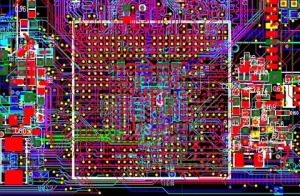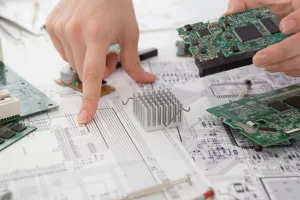目录
ToggleWhat is the importance of a BOM list in a PCB project?
What is BOM list?
BOM stands for Bill of Materials. Generally it always takes three forms:
DBOM (Design BOM) : It is typically created during the product design phase and is focused on capturing the engineering and functional requirements of the product.
EBOM (Engineering BOM) : It refers to the BOM that represents the product’s structure and components from an engineering perspective.
MBOM(Manufacturing BOM): also known as the Production BOM (PBOM), is a BOM that represents the product’s structure and components from a manufacturing perspective. It is created based on the DBOM/EBOM and provides detailed information on how the product should be manufactured. The MBOM includes additional manufacturing-specific details such as manufacturing processes, assembly instructions, routing information, work centers, tooling requirements, and labor hours. It serves as a reference for production planners, manufacturing engineers, and shop floor operators, guiding them in the actual production and assembly of the product.
The most mentioned BOM list of a PCB manufacturer, when we talk about BOM list always be like MBOM(Manufacturing BOM), it is a comprehensive document that provides a detailed breakdown of all the components and materials required to manufacture a product or assemble a system. It serves as a reference for procurement, production, and inventory management.
The BOM list typically includes the following information for each component:
- Part Number: A unique identifier assigned to each component for easy identification and tracking.
- Description: A brief description of the component, including its specifications, characteristics, and functionality.
- Quantity: The quantity of each component required for the assembly or production of the product.
- Reference Designator: A designation that identifies where each component is placed on the PCB or within the system. It helps during the assembly process to ensure components are correctly placed.
- Manufacturer: The name of the manufacturer or supplier of the component.
- Supplier: The name or code of the specific supplier from which the component will be sourced.
- Unit Cost: The cost of each component per unit, which helps in estimating the total cost of materials.
- Total Cost: The calculated total cost of each component based on the quantity required.
- Lead Time: The time required to procure or obtain each component from the supplier.
- Alternatives/Substitutes: If applicable, alternative or substitute components that can be used in case the primary component is unavailable or discontinued.
The BOM list serves as a crucial reference for various stages of the product lifecycle, including procurement, inventory management, production planning, and cost estimation. It helps ensure that all the necessary components are available, facilitates accurate costing and pricing, and enables efficient production and assembly processes. Additionally, the BOM list can be used for documentation, revision control, and future reference during product maintenance and updates.
The importance of BOM list in a PCB project:
- Component Identification: The BOM list provides a detailed breakdown of all the components required for the PCB assembly.It includes part numbers, descriptions, and reference designators, which help identify and locate each component on the prototype board during the PCB assembly process. This ensures accurate placement and soldering of components, minimizing errors and rework.
- Procurement and Sourcing: The BOM list serves as a reference for procurement activities. It specifies the components needed for the project, including the manufacturer and supplier information. The BOM list helps streamline the procurement process by providing a clear list of components to be sourced, ensuring that the correct components are obtained from reliable suppliers.
- Cost Estimation: The BOM list includes unit costs and total costs for each component. This information is crucial for estimating the overall cost of the PCB project. It helps in budgeting, pricing, and determining the feasibility of the project. The BOM list also enables cost optimization by identifying alternative components or suppliers that may offer cost savings.
- Inventory Management: The BOM list assists in managing inventory levels and tracking component availability. By referring to the BOM list, manufacturers can ensure that they have sufficient quantities of each component in stock to meet production demands. It helps prevent shortages or excess inventory, optimizing inventory levels and reducing carrying costs.
- Design Verification: The BOM list is used to cross-reference the components used in the PCB design with the actual components listed in the BOM. This verification process ensures that the correct components are specified in the design and that there are no discrepancies or omissions. It helps identify any potential design errors or mismatches early in the project, reducing the risk of costly revisions or rework.
- Documentation and Revision Control: The BOM list serves as a critical document for documentation and revision control purposes. It provides a comprehensive record of the components used in the PCB assembly, facilitating traceability and future reference. Any changes or updates to the BOM can be tracked and documented, ensuring accurate documentation throughout the project lifecycle.
Overall, the BOM list is vital for PCB projects as it ensures accurate component identification, facilitates procurement and sourcing, enables cost estimation and inventory management, assists in design verification, and serves as a documentation and revision control tool. It helps streamline the PCB assembly process, minimize errors, and ensure the successful completion of the project.









